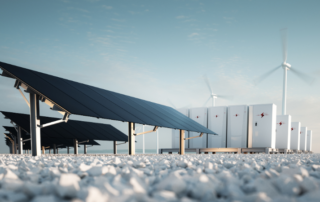Understanding the Power Markets: A Comprehensive Guide to Upstream and Downstream Energy Systems
The U.S. power markets are intricate systems composed of various participants working together to ensure the reliable generation, transmission, and distribution of electricity. This guide explores the structure of upstream and downstream energy systems, their financial models, and their interdependence in powering the nation.
Microgrids: Modernizing Energy Systems for Reliability and Efficiency
As the demand for resilient and sustainable energy systems grows, microgrids are emerging as a transformative solution to modern energy challenges. This article delves into the concept of microgrids, their types, benefits, challenges, and their potential to shape the future of energy systems.
Demand-Side Energy Management: Enhancing Efficiency and Cutting Costs in Commercial Buildings
Demand-side energy management offers commercial buildings a pathway to reduce costs and enhance operational efficiency while supporting sustainability goals. By optimizing energy consumption and leveraging advanced strategies, businesses can achieve significant savings and contribute to a more resilient energy grid.
Optimizing Power with Hybrid Energy Solutions: Merging Renewables, Storage, and Traditional Sources for Reliability
Hybrid energy solutions merge renewable sources, energy storage, and traditional power generation to provide a balanced, reliable energy supply. As businesses navigate the energy transition, these systems offer flexibility, cost savings, and a critical step toward sustainability.
The Role of Natural Gas Peaking Plants in Advancing Renewable Energy Integration
Natural gas peaking plants play a crucial role in stabilizing the energy grid, especially as renewable energy sources become more prevalent. These facilities provide rapid, flexible power during peak demand, ensuring reliability while supporting the broader renewable energy transition.
Understanding Power Purchase Agreements: A Complete Guide for Energy Consumers and Investors
Power purchase agreements (PPAs) are transforming how businesses procure energy by offering long-term stability, cost savings, and direct access to renewable power. By understanding the benefits and complexities of PPAs, energy consumers and investors can make informed decisions in today’s evolving energy markets.





